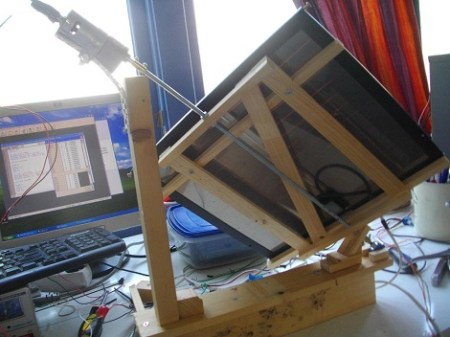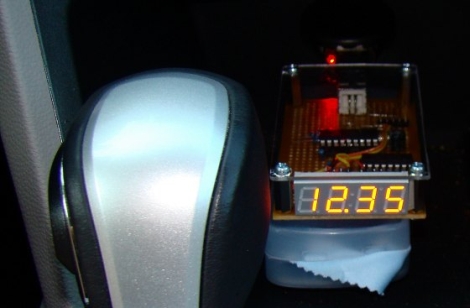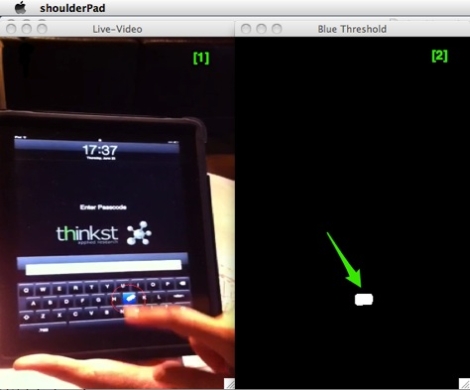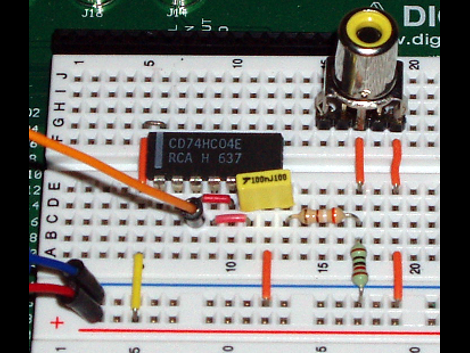
[Frits] has been working on an solar panel heliostat (in Dutch, check out the translated page here).
The heliostat uses a small PICAXE to control the motor, along with an DS1307 real-time clock to make sure the motors start at dawn. Instead of using optical encoders or magnetic sensors, the angle of the heliostat is measure with a pot attached to the drive shaft. [Frits] did a lot of data collection to figure out that this method is accurate to about 1 degree – just fine for something that doesn’t need to be exact.
According to [Frits] this heliostat will put out 12 to 50 percent more electricity than a fixed panel. Although the build does seem a little bulky, putting it on a house with a roof pitch of 23.5° would greatly reduce the horizontal profile.
A video of a solar panel rotating at 15 degrees/hour isn’t that interesting, so [Frits] posted a clip of 6 mirrors slewing around fairly fast to demonstrate his system. Check it out after the break.
















